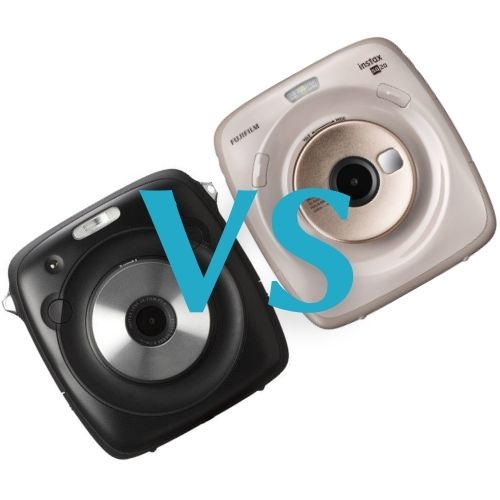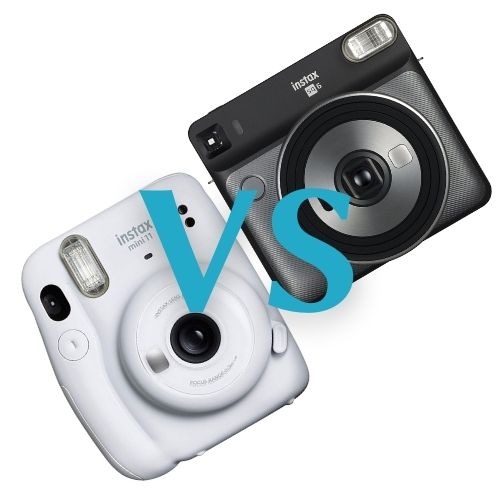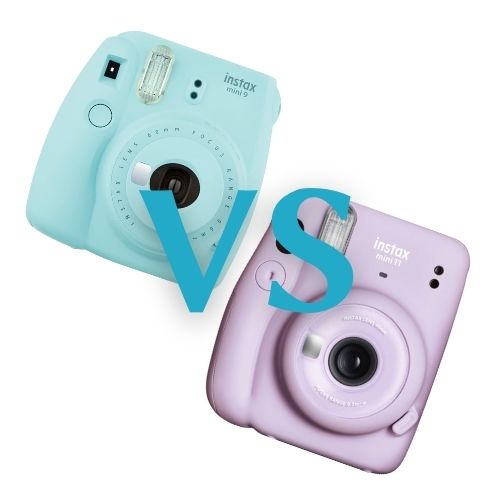
Looking for an instant camera is overwhelming. The options are plenty, but if there is one brand that stands out over all others, it would be Fujifilm. Their Instax line is popular globally and trusted even by the experts. While there are many models available, Instax Square SQ10 and SQ20 are some of the most popular.
Undecided about which amongst the two Instax cameras is best to buy? To help you decide, read the rest of this short Fujifilm Instax Square SQ10 vs SQ20 comparison and learn from the insights we’ll be sharing.
Overview
It was in 1998 when Fujifilm introduced the first Instax camera. The goal is simple – to allow users to shoot and print images in real-time. It was designed not just for taking photos but for exchanging shots. Over the years, different models have been introduced, including SQ10 and SQ20.
The best thing about the two cameras that we are comparing in this post is that they are both designed to be hybrid cameras. This means that like a traditional instant camera, you can print photos in an instant. Nonetheless, what makes them different is that you can also use it in digital mode. There is a screen that shows the images as they are shot, and you can save the pictures in digital format. This way, you can also easily share it online.
Design
A lot of people like instant cameras because of their design. Their retro-inspired shapes will make a great accessory. So, when choosing an instant camera, you need to consider both form and function. At first look, the SQ10 and SQ20 look almost similar. The most noticeable between the two is their bulky square format with a large circle in the middle, which is also where you can see the lens.
If you look closer, however, you will see some notable differences in the two cameras. In SQ20, the lens is the same color as the rest of its body. On the other hand, in SQ10, the lens is silver, which is different from the rest of the body. SQ10 is available in black and white. SQ20, on the other hand, is available in matte black and beige.
In both models, there are two buttons that protrude, so you can easily locate them by just touching the lens. The difference is that in SQ10, these buttons are circular while they are rectangular in SQ20.
Prints
The two cameras are similar in terms of the prints that they can make. They will both make 2.4 x 2.4-inch films. As the name of the camera states, the prints are square. They use the same Instax square film.
Screen
One of the best things about the two cameras is that they both come with a digital screen, which you will find at the back of the unit. Unlike a traditional instant camera, these models are designed to provide an accurate preview of what you are shooting. You don’t have to rely on what is on the optical viewfinder. This also means that you can save film by seeing the image before it is printed, minimizing waste.
In SQ10, you will have a 3-inch LCD with a 460K resolution. On the other hand, the screen of SQ20 is a bit smaller at only 2.7 inches. For most people, the difference in size is hardly noticeable. However, the bigger difference is in terms of their resolution. With SQ10, the screen has 460K resolution, which makes it clearer and crisper compared to the screen of SQ20, which only has a 230K resolution.
Battery
It is frustrating to be out and about with an instant camera, only to end up with a drained battery. So, make sure to consider the battery life. In SQ10, you will find a NP-50 removable battery. This is one thing that we love because this means that you can remove it from the camera and charge separately. This will allow you to have a spare battery.
In contrast, with the SQ20, you have no option but to be stuck with the rechargeable battery that is built-in on the unit. You cannot change it with a spare battery if ever it drains. You have to charge the battery while it is in the camera using a USB cable.
The capacity of the battery is also different. In SQ10, one full charge will take up to 160 shots. On the other hand, in SQ20, a fully charged battery will take only approximately 100 shots.
Sensor
One of the most important features in an instant camera is the sensor. This is highly influential of its overall performance. It dictates the quality of the pictures that will be created. A larger sensor is better. It means that there are bigger pixels, better low-light performance, and less noise, among other benefits.
The two cameras have a digital sensor, but there is a small difference. The sensor size of SQ10 is ¼-inch and it is 1/5-inch in SQ20. The difference is hardly noticeable. Even experts will agree that it does not make any difference. Practically speaking, they both have impressive sensors.
Zoom
Shooting at a distance? Then you need to consider the zoom function of the instant camera. This will allow you to become more playful. The SQ10 is pretty basic, so there is no zoom function. For people who would like to tweak their shots and become more experimental, this can be a drawback. The only option to use the zoom function is once you are ready to print an image but not when it is shot. The zoom works by cropping the photo.
One of the biggest advantages of the Instax SQ20 is that it comes with four times digital zoom. This is the first Instax with this feature, making it easier to be more creative when you are composing your shots. This will allow you to narrow the field of view, and in turn, you can create a telephoto look.
Selfie Mirror
If there is one thing that is common amongst users of instant cameras, it would be that many of them love taking selfies. However, one of the biggest shortcomings of the SQ10 is that it does not come with a selfie mirror. This is quite strange since a selfie mirror is one of the basic features that you will find in entry-level instant cameras.
If you want an instant camera that comes with a selfie mirror, then you should consider choosing the SQ20. On the right size of the lens, there is a small mirror to give you an idea of how the shot will look like once it is printed. This is one of the best ways to prevent wasting film.
Image Effects
A good instant camera should give you the opportunity to be playful with the images. This way, you can become more creative with your shots. The SQ10 is a pretty basic camera. There are ten filters available. You can also choose from six partial color filters.
One of the benefits of choosing SQ20 over SQ10 is that you can enjoy more filters. This is the perfect choice for people who love being more creative. There are 16 filters that you can apply to both stills and video. You can add a subsequent filter to make your shots dreamy.
Shutter Speed
Looking at the technical features of both the cameras, the shutter speed is one more thing at which they are different. SQ10 has a shutter speed of 1/29500. On the other hand, the shutter speed of SQ20 is 1/7500. In theory, however, the difference is irrelevant, so the shutter speed does not vary greatly regardless of the instant camera you will choose.
Motion Mode
This is one of the biggest differences between the two. In SQ10, you can use the camera only for shooting stills. In SQ20, the company introduced a new feature in the form of motion mode, which is like a video capture. This will allow you to take a 15-second video clip. Then, you can choose a frame from the clip that you would like to print. This is good if you are shooting action shots or moving subjects. The SQ20 also comes with a sequence filter. This will allow you to combine multiple frames in one shot, and the result is a blurry but dreamy photo. Through the Time Shift Collage, you can take up to four images in one shot and they will be combined in a dynamic image.
Conclusion
After reading this short guide about Fujifilm Instax Square SQ10 vs SQ20, we hope that it is now easier for you to decide. SQ10 is the cheaper and more basic version, making it a good option for people on a budget. Nonetheless, with a small price difference, we believe that it is worth choosing the SQ20. It has tons of upgraded features, including motion mode and more filters. This is a great way to get into the world of instant cameras and play with your creative mind.







